
Young Banana Tree
Banana is widely recognized as the popular fruit produced by the herbaceous plants of the genus Musa. Originating from the tropical regions of Southeast Asia and Australia, bananas are now cultivated around the world in tropical and subtropical climates, providing a versatile and nutritious food source.
As members of the Musaceae family, banana plants are primarily grown for their delicious fruit, yet they are also appreciated for their fibrous material and ornamental appeal. Although they may appear tree-like, these plants actually feature a “pseudostem” – a false trunk formed from overlapping leaf sheaths – which can reach heights of 2 to 8 meters. Each pseudostem produces a cluster of bananas that may be yellow, green, or even red before the plant renews its growth cycle.

Young Banana Tree
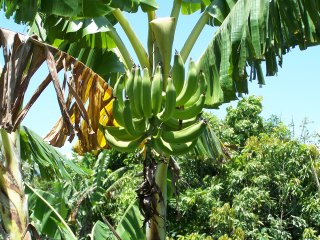
Mature Banana on the Tree
Bananas grow in distinctive hanging clusters, with each tier—known as a “hand”—containing up to 20 fruits. The entire cluster, often referred to as a bunch or commercially as a “banana stem,” can weigh between 30 and 50 kilograms. Each individual banana, commonly called a “finger,” weighs about 125 grams and is composed of roughly 75% water and 25% dry matter. Encased in a protective peel, the soft interior is interlaced with fibrous strands, making bananas an excellent source of vitamin B6, vitamin C, and potassium.
Cultivated in over 100 countries, bananas are a global staple. In everyday language, the term “banana” typically refers to the sweet, soft dessert varieties enjoyed fresh, while firmer, starchier cultivars known as plantains are favored for cooking. Additionally, bananas can be dried into chips, ground into flour, or processed in various ways to meet diverse culinary needs.
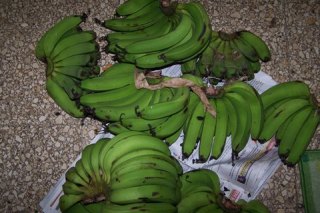
Green Banana

Ripe Banana
Ripe bananas display a vibrant spectrum of colors—from the classic yellow to hues of purple and red. While many varieties are enjoyed fresh, certain types are best cooked to enhance their flavor. The taste can vary from starchy to sweet, and the texture ranges from firm to delectably soft, depending on the cultivar and ripeness. Unripe bananas and plantains serve as a staple in many tropical dishes, while the sticky sap, extracted from the pseudostem or peel, is sometimes used as a natural adhesive.
Beyond the fruit itself, various parts of the banana plant hold culinary significance. The banana blossom, or heart, is a delicacy in Southeast Asian, Bengali, and Kerala cuisines—served raw with dips or incorporated into soups and curries. The tender core of the pseudostem is used in dishes such as Burmese mohinga, as well as in Bengali and Kerala recipes. In Malaysia, Singapore, and Indonesia, battered and fried bananas are a popular dessert often enjoyed with ice cream. In Myanmar, bananas are prepared in multiple ways—deep-fried, baked in their peel, or steamed with glutinous rice wrapped in banana leaves. In some traditions, bunches of green bananas arranged around a green coconut are offered as symbols of prosperity, while juice from the tender core is used in traditional remedies.
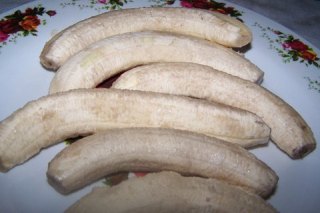
Green Banana for Boiling
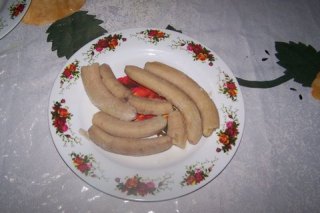
Boiled Banana
The expansive, flexible, and water-resistant banana leaves are valued for numerous uses—from serving as natural umbrellas to wrapping food for cooking, carrying, and packaging. In South India, meals are traditionally served on banana leaves, a custom that continues in many modern eateries. Similarly, in Chinese and Central American cuisines, banana leaves are used to steam delicacies like zongzi and tamales, while in Puerto Rico they wrap pasteles before boiling. Their versatility even encourages some farmers to cultivate banana plants primarily for their abundant foliage.
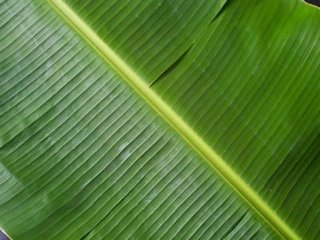
Banana Leaf